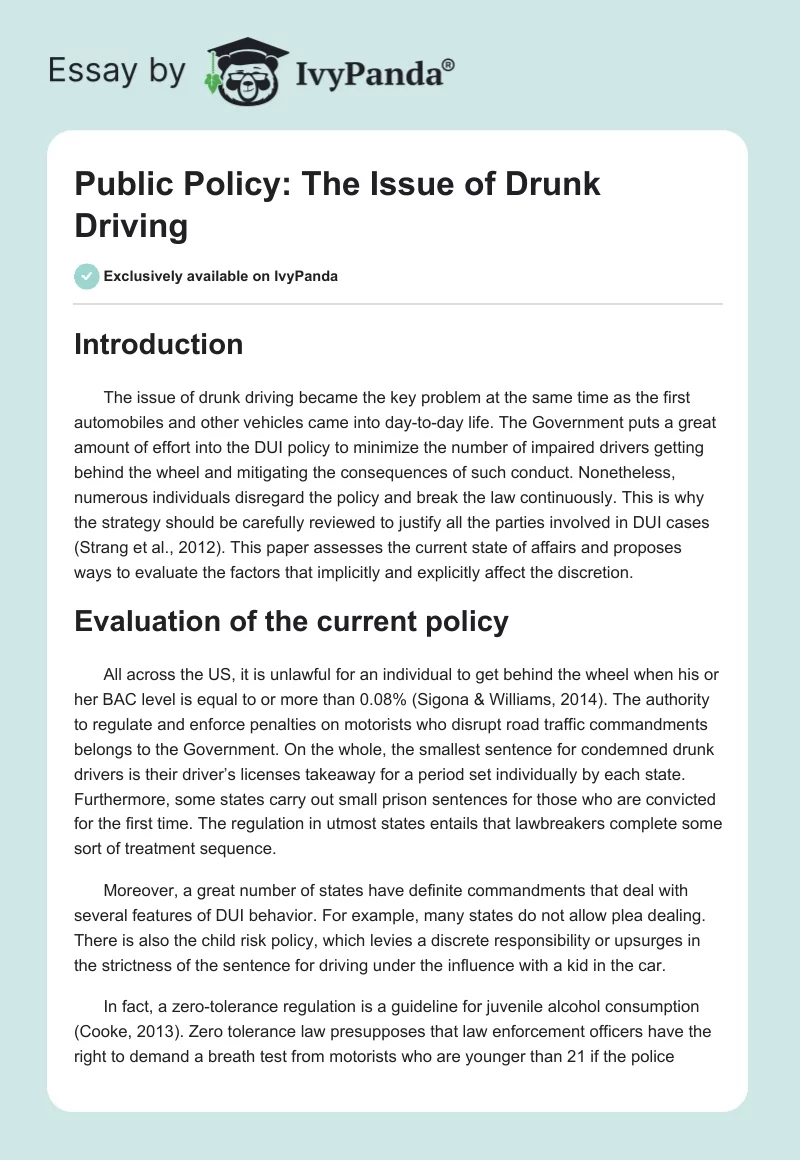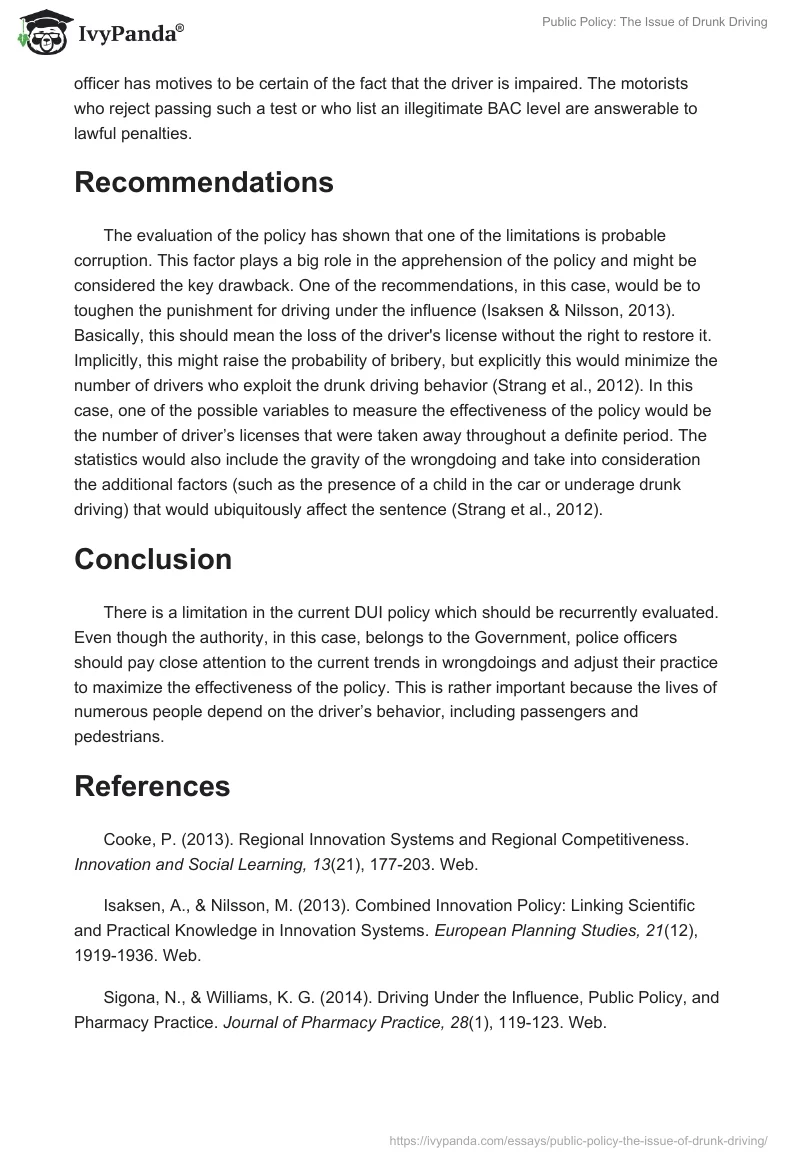Introduction
The issue of drunk driving became the key problem at the same time as the first automobiles and other vehicles came into day-to-day life. The Government puts a great amount of effort into the DUI policy to minimize the number of impaired drivers getting behind the wheel and mitigating the consequences of such conduct. Nonetheless, numerous individuals disregard the policy and break the law continuously. This is why the strategy should be carefully reviewed to justify all the parties involved in DUI cases (Strang et al., 2012). This paper assesses the current state of affairs and proposes ways to evaluate the factors that implicitly and explicitly affect the discretion.
Evaluation of the current policy
All across the US, it is unlawful for an individual to get behind the wheel when his or her BAC level is equal to or more than 0.08% (Sigona & Williams, 2014). The authority to regulate and enforce penalties on motorists who disrupt road traffic commandments belongs to the Government. On the whole, the smallest sentence for condemned drunk drivers is their driver’s licenses takeaway for a period set individually by each state. Furthermore, some states carry out small prison sentences for those who are convicted for the first time. The regulation in utmost states entails that lawbreakers complete some sort of treatment sequence.
Moreover, a great number of states have definite commandments that deal with several features of DUI behavior. For example, many states do not allow plea dealing. There is also the child risk policy, which levies a discrete responsibility or upsurges in the strictness of the sentence for driving under the influence with a kid in the car.
In fact, a zero-tolerance regulation is a guideline for juvenile alcohol consumption (Cooke, 2013). Zero tolerance law presupposes that law enforcement officers have the right to demand a breath test from motorists who are younger than 21 if the police officer has motives to be certain of the fact that the driver is impaired. The motorists who reject passing such a test or who list an illegitimate BAC level are answerable to lawful penalties.
Recommendations
The evaluation of the policy has shown that one of the limitations is probable corruption. This factor plays a big role in the apprehension of the policy and might be considered the key drawback. One of the recommendations, in this case, would be to toughen the punishment for driving under the influence (Isaksen & Nilsson, 2013). Basically, this should mean the loss of the driver’s license without the right to restore it. Implicitly, this might raise the probability of bribery, but explicitly this would minimize the number of drivers who exploit the drunk driving behavior (Strang et al., 2012). In this case, one of the possible variables to measure the effectiveness of the policy would be the number of driver’s licenses that were taken away throughout a definite period. The statistics would also include the gravity of the wrongdoing and take into consideration the additional factors (such as the presence of a child in the car or underage drunk driving) that would ubiquitously affect the sentence (Strang et al., 2012).
Conclusion
There is a limitation in the current DUI policy which should be recurrently evaluated. Even though the authority, in this case, belongs to the Government, police officers should pay close attention to the current trends in wrongdoings and adjust their practice to maximize the effectiveness of the policy. This is rather important because the lives of numerous people depend on the driver’s behavior, including passengers and pedestrians.
References
Cooke, P. (2013). Regional Innovation Systems and Regional Competitiveness. Innovation and Social Learning, 13(21), 177-203. Web.
Isaksen, A., & Nilsson, M. (2013). Combined Innovation Policy: Linking Scientific and Practical Knowledge in Innovation Systems. European Planning Studies, 21(12), 1919-1936. Web.
Sigona, N., & Williams, K. G. (2014). Driving Under the Influence, Public Policy, and Pharmacy Practice. Journal of Pharmacy Practice, 28(1), 119-123. Web.
Strang, J., Babor, T., Caulkins, J., Fischer, B., Foxcroft, D., & Humphreys, K. (2012). Drug Policy and the Public Good: Evidence for Effective Interventions. The Lancet, 379(9810), 71-83. Web.


